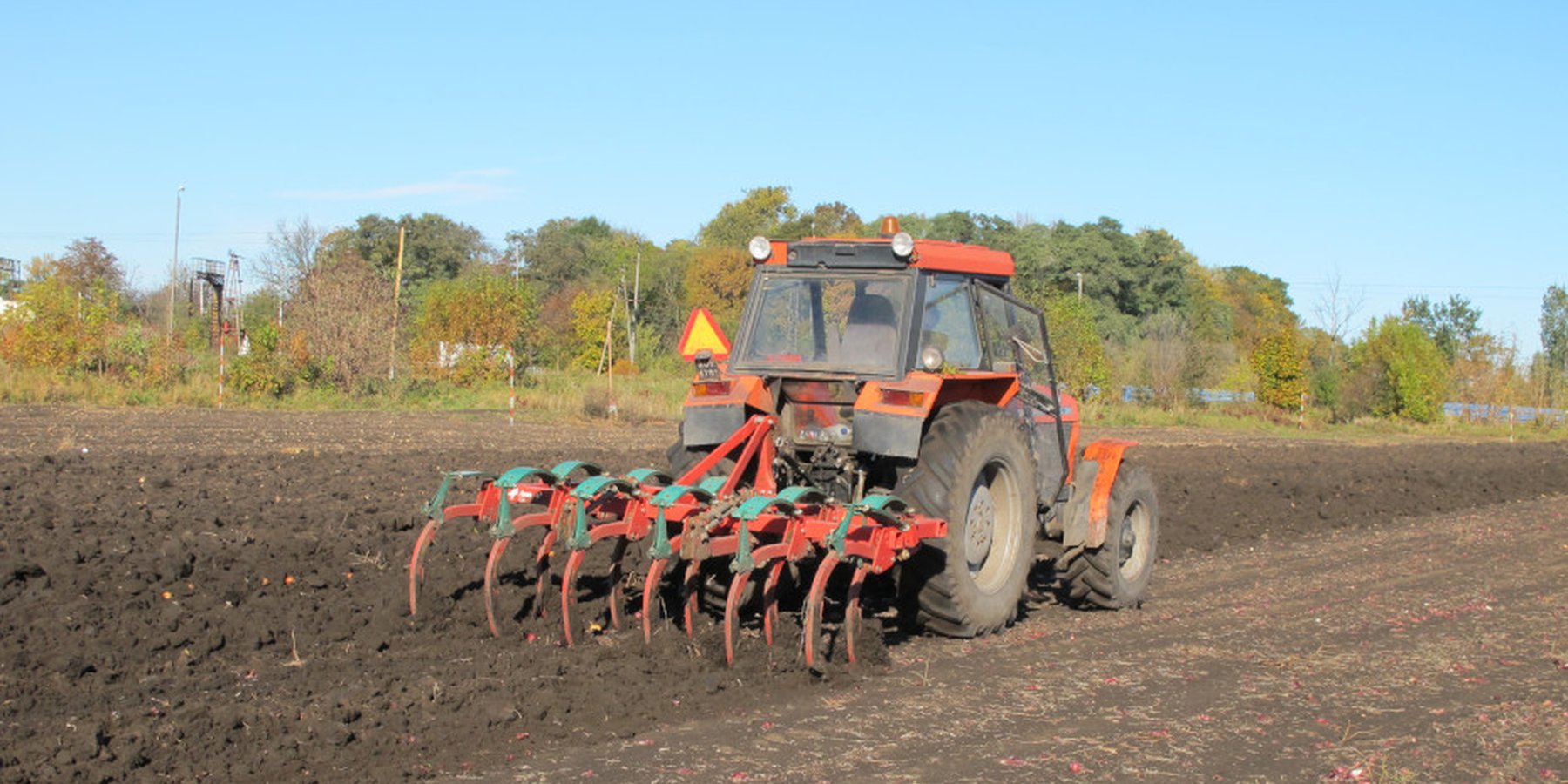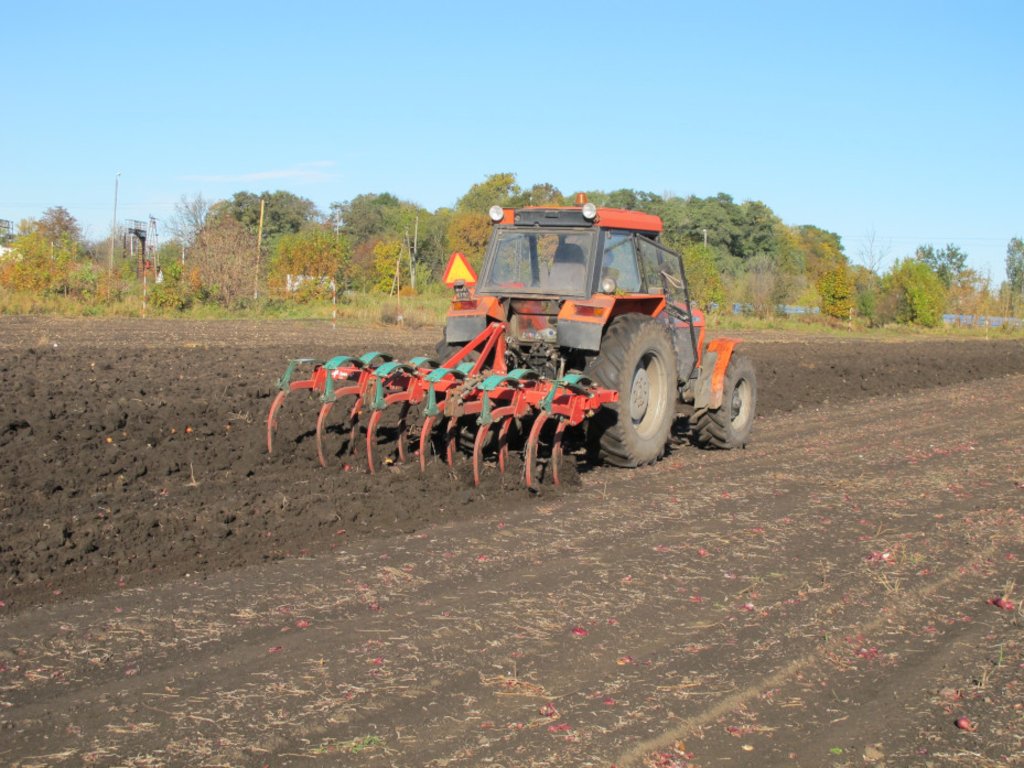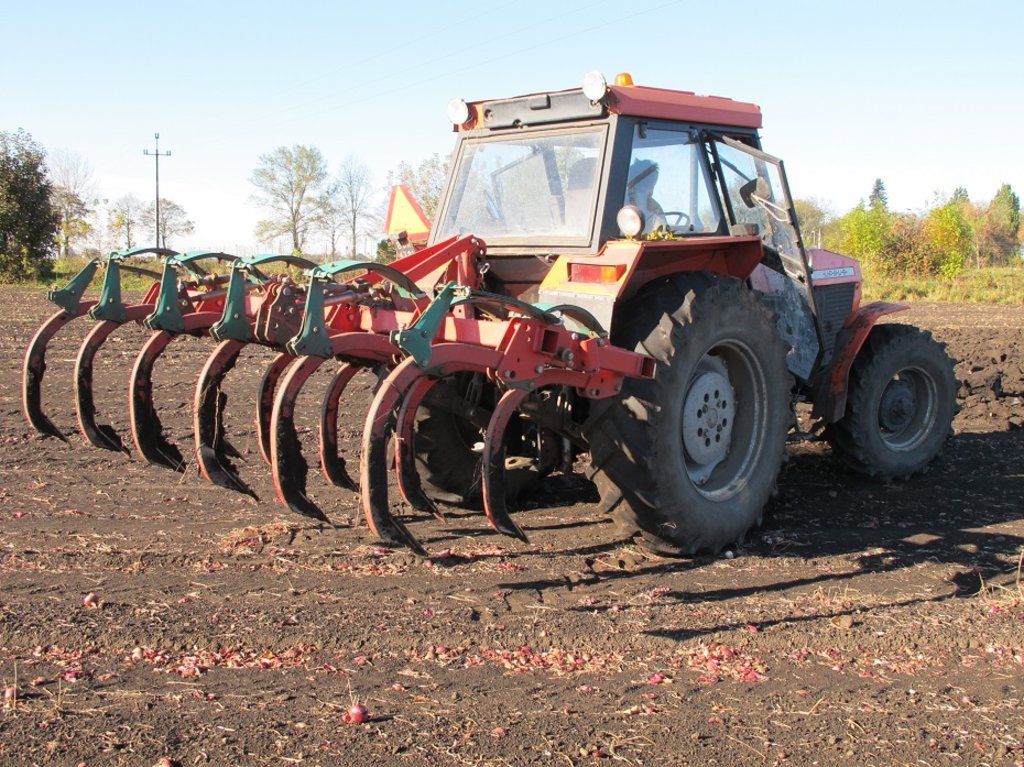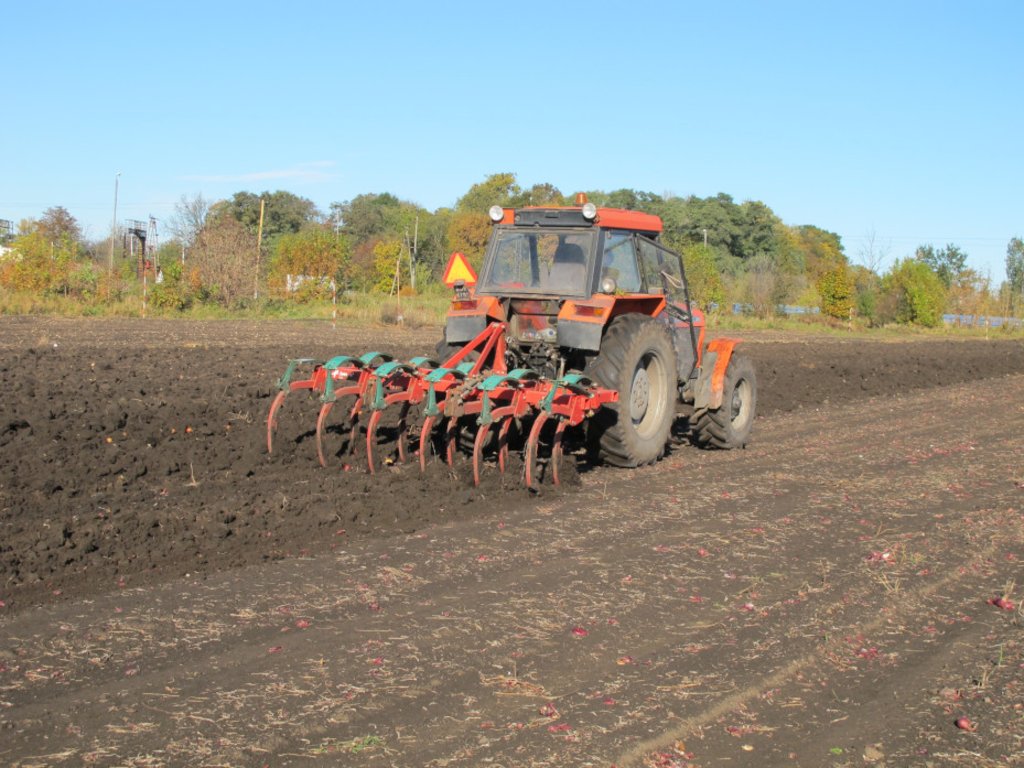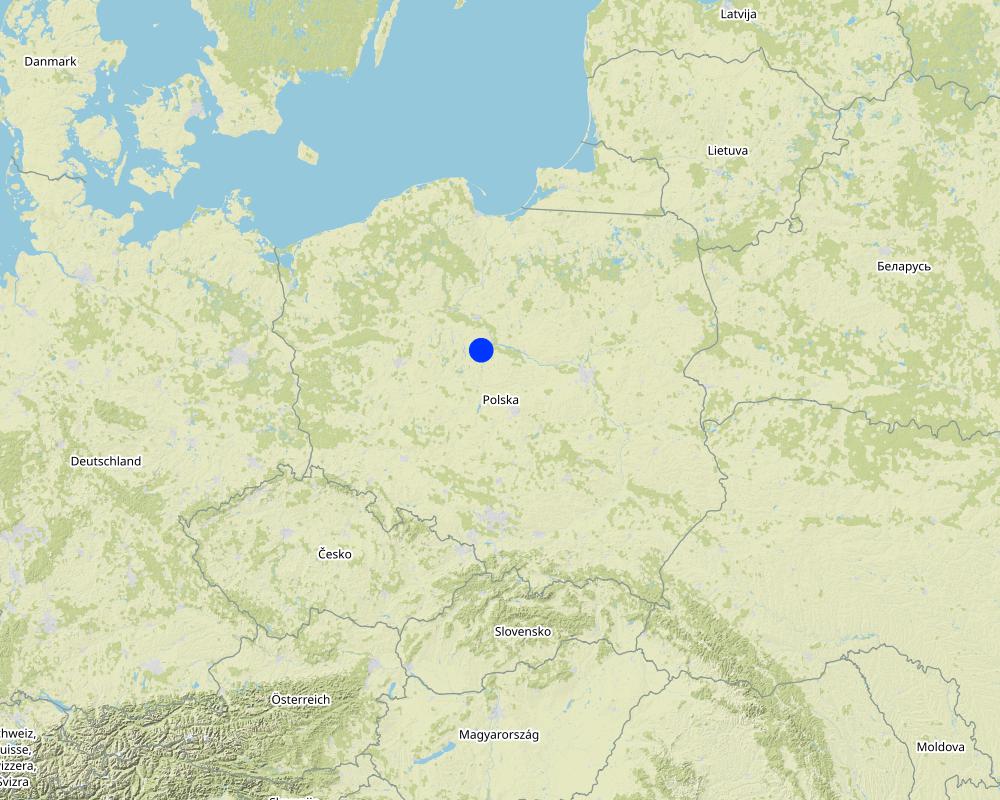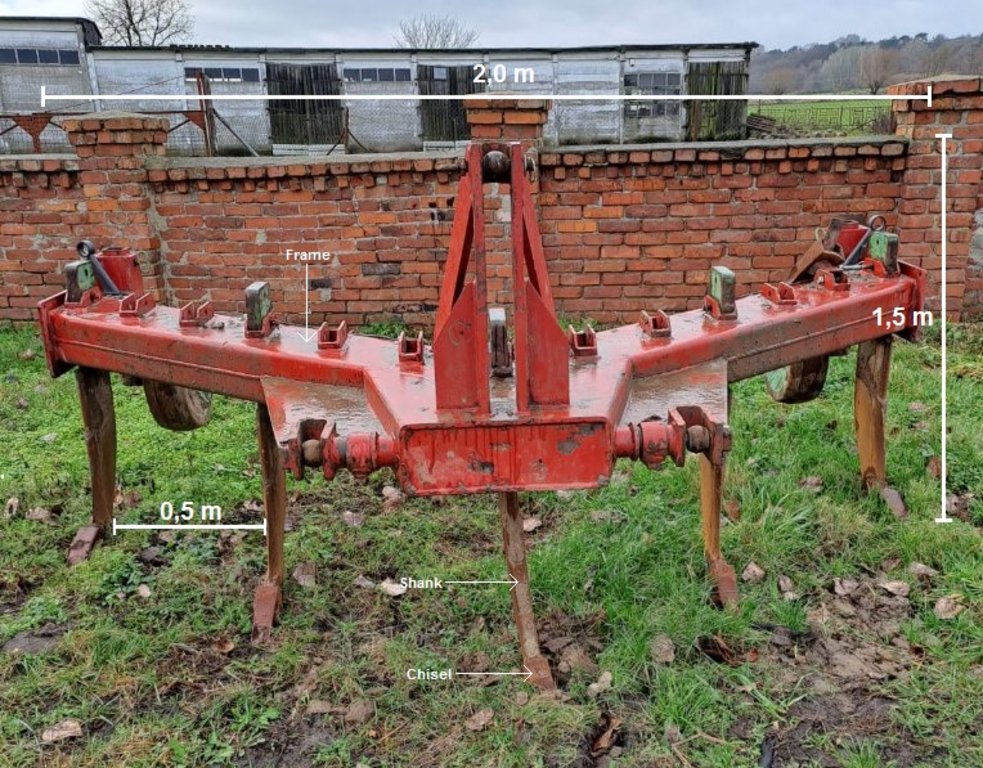Subsoiling [Poland]
- Creation:
- Update:
- Compiler: Tymoteusz Bolewski
- Editor: Marek Giełczewski
- Reviewers: William Critchley, Rima Mekdaschi Studer
Głęboszowanie
technologies_6250 - Poland
View sections
Expand all Collapse all1. General information
1.2 Contact details of resource persons and institutions involved in the assessment and documentation of the Technology
Key resource person(s)
land user:
- Tadeusz
Self-employed farmer
Poland
land user:
- Marcin
Self-employed farmer
Poland
land user:
- Jaroslaw
medium scale enterprise
Poland
Name of project which facilitated the documentation/ evaluation of the Technology (if relevant)
OPtimal strategies to retAIN and re-use water and nutrients in small agricultural catchments across different soil-climatic regions in Europe (OPTAIN)Name of the institution(s) which facilitated the documentation/ evaluation of the Technology (if relevant)
Institute of Technology and Life Sciences – National Research Institute, Poland (ITP) - Poland1.3 Conditions regarding the use of data documented through WOCAT
The compiler and key resource person(s) accept the conditions regarding the use of data documented through WOCAT:
Ja
1.4 Declaration on sustainability of the described Technology
Is the Technology described here problematic with regard to land degradation, so that it cannot be declared a sustainable land management technology?
Nee
Comments:
-
1.5 Reference to Questionnaire(s) on SLM Approaches (documented using WOCAT)
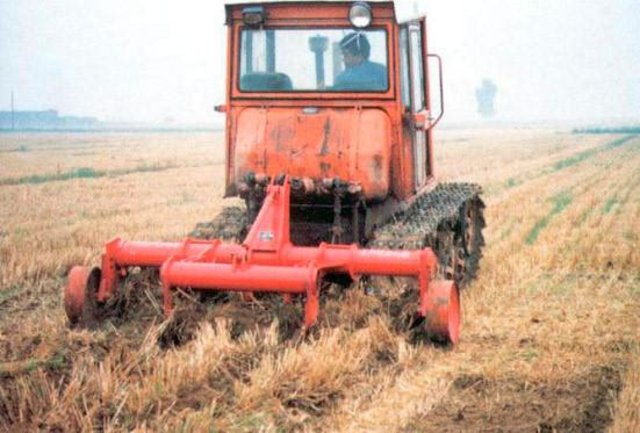
Subsoiling [China]
Subsoiling with mulching is one of the conservative tillage using subsoiling plough to loose subsoils with surface soil undisturbed.
- Compiler: Zhanguo Bai
2. Description of the SLM Technology
2.1 Short description of the Technology
Definition of the Technology:
Subsoiling is defined as tillage below a depth of about 35-40 cm which doesn't invert the soil. It breaks up compacted layers to improve rooting and infiltration. Subsoiling is not needed on light soils, because these are rarely at risk of compaction.
2.2 Detailed description of the Technology
Description:
Subsoiling is carried out on arable land. Subsolier is pulled by a tractor and chisels (tines) break up a compacted layer below the surface. Subsoiling disturbs this dense layer and loosens the soil. This treatment improves air-water relations in the soil. The depth of subsoiling can be adjusted. On heavier soils, deeper subsoiling may be necessary. The farmer surveyed (who has a medium sized enterprise of about 400 ha) subsoils at a depth of 40-45 cm. Subsoiling is used especially for root crops such as sugar beet - and for other crops to a lesser extent, depending on the needs and condition of the soil. It is possible to adjust the spacing of the chisels (tines) and the power of the tractor. An average spacing between the chisels is 50 cm. A 200 horsepower tractor is able to pull a five-tine subsoiler. If time permits, the whole field should be subsoiled. Subsoiling takes quite a long time (about 10 ha per day). This technology is required every year when sugar beet is planted. In other fields, only machinery tracks and headlands (where the machine turns) should be subsoiled every year. Subsoiling is often used after harvest and before other field operations such as ploughing etc. On average, due to crop rotation, the whole field is only subsoiled once every four years. Subsoiling is a form of tillage which can be used instead of traditional ploughing to loosen soil without inverting it: thus it can form part of a reduced tillage system.
2.3 Photos of the Technology
General remarks regarding photos:
Subsoiling as an activity in reduced tillage technology system.
2.4 Videos of the Technology
Comments, short description:
-
Location:
-
Name of videographer:
-
2.5 Country/ region/ locations where the Technology has been applied and which are covered by this assessment
Country:
Poland
Region/ State/ Province:
Kuyavian-Pomeranian Voivodeship
Further specification of location:
Southern part of the region called Kujawy
Specify the spread of the Technology:
- evenly spread over an area
If precise area is not known, indicate approximate area covered:
- 1-10 km2
Is/are the technology site(s) located in a permanently protected area?
Nee
Comments:
Most often used as a part of conventional tillage technology, as an additional activity. Subsoiling is performed on about 25% of total farm area.
Map
×2.6 Date of implementation
If precise year is not known, indicate approximate date:
- 10-50 years ago
2.7 Introduction of the Technology
Specify how the Technology was introduced:
- through land users' innovation
- during experiments/ research
Comments (type of project, etc.):
-
3. Classification of the SLM Technology
3.1 Main purpose(s) of the Technology
- improve production
- reduce, prevent, restore land degradation
- conserve ecosystem
3.2 Current land use type(s) where the Technology is applied
Land use mixed within the same land unit:
Nee

Cropland
- Annual cropping
Annual cropping - Specify crops:
- cereals - barley
- cereals - maize
- cereals - oats
- cereals - wheat (spring)
- cereals - wheat (winter)
- root/tuber crops - sugar beet
- vegetables - root vegetables (carrots, onions, beet, other)
Number of growing seasons per year:
- 1
Is intercropping practiced?
Nee
Is crop rotation practiced?
Ja
3.3 Has land use changed due to the implementation of the Technology?
Has land use changed due to the implementation of the Technology?
- No (Continue with question 3.4)
3.4 Water supply
Water supply for the land on which the Technology is applied:
- mixed rainfed-irrigated
3.5 SLM group to which the Technology belongs
- minimal soil disturbance
3.6 SLM measures comprising the Technology

agronomic measures
- A3: Soil surface treatment
- A4: Subsurface treatment
A3: Differentiate tillage systems:
A 3.2: Reduced tillage (> 30% soil cover)
3.7 Main types of land degradation addressed by the Technology

soil erosion by water
- Wt: loss of topsoil/ surface erosion

soil erosion by wind
- Et: loss of topsoil

physical soil deterioration
- Pc: compaction

water degradation
- Ha: aridification
3.8 Prevention, reduction, or restoration of land degradation
Specify the goal of the Technology with regard to land degradation:
- prevent land degradation
- reduce land degradation
4. Technical specifications, implementation activities, inputs, and costs
4.1 Technical drawing of the Technology
Technical specifications (related to technical drawing):
The activity is performed with a subsoiler. This is a cultivation device connected to the tractor. In the case of the subsoiler with five working parts (shanks ended with chisels): (i) width between two chisels is 50 cm and total width is about 2.0-2.5 m, (ii) height is about 1.5 m; (iii) weight about 800 kg.
A tractor with at least 200 horsepower is needed for a subsoiler with 5 chisels.
Author:
Jarosław
Date:
15/11/2022
4.2 General information regarding the calculation of inputs and costs
Specify how costs and inputs were calculated:
- per Technology area
Indicate size and area unit:
ha
If using a local area unit, indicate conversion factor to one hectare (e.g. 1 ha = 2.47 acres): 1 ha =:
-
If relevant, indicate exchange rate from USD to local currency (e.g. 1 USD = 79.9 Brazilian Real): 1 USD =:
4.45
Indicate average wage cost of hired labour per day:
300.00 PLN
4.3 Establishment activities
| Activity | Timing (season) | |
|---|---|---|
| 1. | - | - |
Comments:
-
4.4 Costs and inputs needed for establishment
| Specify input | Unit | Quantity | Costs per Unit | Total costs per input | % of costs borne by land users | |
|---|---|---|---|---|---|---|
| Labour | - | |||||
| Equipment | - | |||||
| Plant material | - | |||||
| Fertilizers and biocides | - | |||||
| Construction material | - | |||||
| Other | - |
4.5 Maintenance/ recurrent activities
| Activity | Timing/ frequency | |
|---|---|---|
| 1. | Subsoiling | late summer, early autumn (after harvest of crops) |
Comments:
The exact date of performing subsoiling depends on several conditions, for example: (i) soil moisture conditions in the field; (ii) date of harvest crop in the field intended to be subsoil; (iii) subsoiler and tractor availability.
The subsoiler is a simple machine, the frame is durable but the chisels wear out very fast, especially due to dry soil conditions.
4.6 Costs and inputs needed for maintenance/ recurrent activities (per year)
| Specify input | Unit | Quantity | Costs per Unit | Total costs per input | % of costs borne by land users | |
|---|---|---|---|---|---|---|
| Labour | skill labour | person-hour | 1.0 | 30.0 | 30.0 | 100.0 |
| Equipment | tractor and subsoiler (depreciation) | machine-hour | 1.0 | 10.0 | 10.0 | 100.0 |
| Equipment | chisels | machine-hour | 1.0 | 25.0 | 25.0 | 100.0 |
| Equipment | tractor fuel | liter per hour | 20.0 | 7.0 | 140.0 | 100.0 |
| Total costs for maintenance of the Technology | 205.0 | |||||
| Total costs for maintenance of the Technology in USD | 46.07 | |||||
Comments:
It is assumed, that within 1 hour the worker is subsoiling 1 ha in average conditions (field size = 40 ha; subsoiling about 10 ha per day and costings given for 1 hectare)
4.7 Most important factors affecting the costs
Describe the most determinate factors affecting the costs:
price of fuel, area needed to subsoling, moisture conditions in the fields, granulometric compisition of the soil
5. Natural and human environment
5.1 Climate
Annual rainfall
- < 250 mm
- 251-500 mm
- 501-750 mm
- 751-1,000 mm
- 1,001-1,500 mm
- 1,501-2,000 mm
- 2,001-3,000 mm
- 3,001-4,000 mm
- > 4,000 mm
Specify average annual rainfall (if known), in mm:
500.00
Specifications/ comments on rainfall:
Summer months (IV-IX) rainfalls are 60% of total amounts in a year; not equal disrtibution in time and place; climatic water balance (precipitation - Penman-Monteith reference evapotranspiration) on average about -190 mm; every year two dry periods of 11–15 days and one period lasting 15–20 days occur on the average, the period lasting more then 20 days occurrs every second year. About 50–60 days with atmospheric drought may be expected every year.
Indicate the name of the reference meteorological station considered:
Samszyce and Bydgoszcz
Agro-climatic zone
- sub-humid
mean annual temperature: 8,5 deg. C
5.2 Topography
Slopes on average:
- flat (0-2%)
- gentle (3-5%)
- moderate (6-10%)
- rolling (11-15%)
- hilly (16-30%)
- steep (31-60%)
- very steep (>60%)
Landforms:
- plateau/plains
- ridges
- mountain slopes
- hill slopes
- footslopes
- valley floors
Altitudinal zone:
- 0-100 m a.s.l.
- 101-500 m a.s.l.
- 501-1,000 m a.s.l.
- 1,001-1,500 m a.s.l.
- 1,501-2,000 m a.s.l.
- 2,001-2,500 m a.s.l.
- 2,501-3,000 m a.s.l.
- 3,001-4,000 m a.s.l.
- > 4,000 m a.s.l.
Indicate if the Technology is specifically applied in:
- not relevant
5.3 Soils
Soil depth on average:
- very shallow (0-20 cm)
- shallow (21-50 cm)
- moderately deep (51-80 cm)
- deep (81-120 cm)
- very deep (> 120 cm)
Soil texture (topsoil):
- medium (loamy, silty)
Soil texture (> 20 cm below surface):
- medium (loamy, silty)
Topsoil organic matter:
- medium (1-3%)
5.4 Water availability and quality
Ground water table:
< 5 m
Availability of surface water:
good
Water quality (untreated):
poor drinking water (treatment required)
Water quality refers to:
both ground and surface water
Is water salinity a problem?
Nee
Is flooding of the area occurring?
Nee
5.5 Biodiversity
Species diversity:
- medium
Habitat diversity:
- medium
5.6 Characteristics of land users applying the Technology
Sedentary or nomadic:
- Sedentary
Market orientation of production system:
- commercial/ market
Off-farm income:
- less than 10% of all income
Relative level of wealth:
- average
Individuals or groups:
- individual/ household
Level of mechanization:
- mechanized/ motorized
Gender:
- women
- men
Age of land users:
- middle-aged
- elderly
5.7 Average area of land used by land users applying the Technology
- < 0.5 ha
- 0.5-1 ha
- 1-2 ha
- 2-5 ha
- 5-15 ha
- 15-50 ha
- 50-100 ha
- 100-500 ha
- 500-1,000 ha
- 1,000-10,000 ha
- > 10,000 ha
Is this considered small-, medium- or large-scale (referring to local context)?
- medium-scale
Comments:
The technology is used on big (> 100 ha) and medium sized farms
5.8 Land ownership, land use rights, and water use rights
Land ownership:
- individual, not titled
- individual, titled
Land use rights:
- leased
- individual
Water use rights:
- individual
Are land use rights based on a traditional legal system?
Ja
5.9 Access to services and infrastructure
health:
- poor
- moderate
- good
education:
- poor
- moderate
- good
technical assistance:
- poor
- moderate
- good
employment (e.g. off-farm):
- poor
- moderate
- good
markets:
- poor
- moderate
- good
energy:
- poor
- moderate
- good
roads and transport:
- poor
- moderate
- good
drinking water and sanitation:
- poor
- moderate
- good
financial services:
- poor
- moderate
- good
6. Impacts and concluding statements
6.1 On-site impacts the Technology has shown
Socio-economic impacts
Production
crop production
Comments/ specify:
The yield-forming effect of this treatment is visible throughout the entire crop rotation.
crop quality
Comments/ specify:
These notes especially concern sugar beet and root crops.
risk of production failure
Comments/ specify:
-
Income and costs
expenses on agricultural inputs
Comments/ specify:
Relatively expensive measure.
farm income
Comments/ specify:
Guarantee of high and stable crop yield (e.g. sugar beet).
workload
Comments/ specify:
-
Socio-cultural impacts
food security/ self-sufficiency
Comments/ specify:
-
Ecological impacts
Water cycle/ runoff
surface runoff
Comments/ specify:
Increased rate of infiltration.
evaporation
Comments/ specify:
Especially when subsoiling is performed instead of ploughing.
Soil
soil moisture
Comments/ specify:
Increased soil water capacity and soil aeration.
soil crusting/ sealing
Comments/ specify:
-
soil compaction
Comments/ specify:
The main purpose of the measure is to remove soil excessive compaction.
soil organic matter/ below ground C
Comments/ specify:
Subsoiling as a part of reduced tillage technology (as a tillage performed instead traditional ploughing) causes lower rate of organic matter decomposition comparing to the ploughing.
Climate and disaster risk reduction
emission of carbon and greenhouse gases
Comments/ specify:
Subsoilng as a part of reduced tillage technology (as a tillage performed instead traditional ploughing) reduces CO2 emission from soil comparing to traditional ploughing.
Specify assessment of on-site impacts (measurements):
Changes that can be measured: soil density decrease, soil porosity increase, infiltration rate increase, plant rooting depth increase, stable yield, reduced emission of CO2.
6.2 Off-site impacts the Technology has shown
impact of greenhouse gases
Comments/ specify:
Using subsoiling instead of conventional ploughing reduces emission of CO2 from soil.
Specify assessment of off-site impacts (measurements):
Changes that can be measured: decreased CO2 emission.
6.3 Exposure and sensitivity of the Technology to gradual climate change and climate-related extremes/ disasters (as perceived by land users)
Gradual climate change
Gradual climate change
| Season | increase or decrease | How does the Technology cope with it? | |
|---|---|---|---|
| seasonal rainfall | summer | decrease | moderately |
| seasonal rainfall | autumn | decrease | moderately |
Climate-related extremes (disasters)
Climatological disasters
| How does the Technology cope with it? | |
|---|---|
| drought | moderately |
Comments:
In order to obtain the appropriate result of the subsoiling operation, it should be performed in conditions of adequate (optimum) soil moisture.
In the Kujawy region dry agrometeorological conditions are observed more frequently than wet ones. In conditions of insufficient soil moisture (dry and hard soil) chisels “tear up” the soil and the effect of its proper loosening is not achieved. At the same time performing subsoiling in very dry soil conditions is associated with high soil resistance the tractor must overcome. This results in increase in the tillage cost.
In conditions of excessive soil moisture soil “smearing effect “ occurs and the effect of its proper loosening is also not achieved.
Due to the observed in the region warming of the climate and the unfavourable changes in the distribution of rainfall throughout the year, water deficits in the soils may become more and more frequent. It may cause more rare occurring conditions which are optimal for performing subsoiling. This will be a problem for farmers using this tillage and it will limit possibility of performing subsoiling.
6.4 Cost-benefit analysis
How do the benefits compare with the establishment costs (from land users’ perspective)?
Short-term returns:
very positive
Long-term returns:
positive
How do the benefits compare with the maintenance/ recurrent costs (from land users' perspective)?
Short-term returns:
positive
Long-term returns:
positive
Comments:
-
6.5 Adoption of the Technology
- 11-50%
If available, quantify (no. of households and/ or area covered):
-
Of all those who have adopted the Technology, how many did so spontaneously, i.e. without receiving any material incentives/ payments?
- 91-100%
Comments:
-
6.6 Adaptation
Has the Technology been modified recently to adapt to changing conditions?
Nee
6.7 Strengths/ advantages/ opportunities of the Technology
| Strengths/ advantages/ opportunities in the land user’s view |
|---|
| The effects of subsoiling are so noticeable (increased crop yield and quality) that it is worth doing, especially on root crops (e.g. sugar beet). The yield-forming effect of this treatment is also visible throughout the entire crop rotation |
|
It improves air-water relations in the soil. This treatment eliminates the soil layer with excessive density, loosening this layer and the layers located above. It is also recommended for farmers who irrigate their fields. |
| Thanks to the treatment, the plants (i) are better rooted, (ii) give higher yield, especially root crops, (iii) penetrate the soil and reach water more easily, without encountering an obstacle. Other plants also achieve stronger root system, as well as better take up and absorb water and nutrients. |
| This treatment improves biological properties of the soil and reduces root diseases; |
| Strengths/ advantages/ opportunities in the compiler’s or other key resource person’s view |
|---|
| Subsoiling used as a part of reduced tillage lets to reduce magnitude of CO2 emission from soil. |
| Subsoiling enhances water supply of plants by capillary rise. |
| As a loosening treatment, it exposes the soil to water and wind erosion to a lesser extent than ploughing. |
6.8 Weaknesses/ disadvantages/ risks of the Technology and ways of overcoming them
| Weaknesses/ disadvantages/ risks in the land user’s view | How can they be overcome? |
|---|---|
| Subsoiling is an additional activity, not popular and it is not cheap. | To create the program for subsidies for such activities. |
| Most often it is performed as after harvesting and as pre-winter tillage. In order to be the most economically effective, subsoiling should be performed in optimal conditions of soil moisture due to wearing chisels. | Monitoring of agrometeorological conditions and proper organisation of activities in the farm. |
| Weaknesses/ disadvantages/ risks in the compiler’s or other key resource person’s view | How can they be overcome? |
|---|---|
| Subsoiling requires very good knowledge of the field (due to risk of drainage system damage). | To possess knowledge of spatial distribution of drainage pipes in the fields, to have maps of the field with such information. |
7. References and links
7.1 Methods/ sources of information
- field visits, field surveys
3
- interviews with land users
3
When were the data compiled (in the field)?
09/11/2022
Comments:
-
7.2 References to available publications
Title, author, year, ISBN:
Influence of agrireclamation measures on water-physical properties of compact soils, changes in roots and plant yields (Wpływ zabiegów agromelioracyjnych na właściwości fizyczno-wodne gleb zwięzłych oraz ukorzenienie i plony roślin), Miatkowski Z., 2001., Bibl. Wiad. IMUZ, no 99, pp 107 (in Polish, summary in English)
Available from where? Costs?
Library of Institute of Technology and Life Sciences, National Research Institute (ITP)
Title, author, year, ISBN:
Subsoiling in conventional and conservation tillage for sugar beet growing (Zastosowanie głęboszowania w tradycyjnej i konserwującej uprawie roli pod buraki cukrowe). Miatkowski Z., Sołtysik A., Banaszak H., 2006, Problemy Inżynierii Rolniczej vol. 2, p. 53-60.
Available from where? Costs?
Library of ITP and http://yadda.icm.edu.pl/baztech/element/bwmeta1.element.baztech-article-BAR0-0016-0084
7.3 Links to relevant online information
Title/ description:
Effects on Soil Water Holding Capacity and Soil Water Retention Resulting from Soil Health Management Practices Implementation
URL:
https://www.nrcs.usda.gov/sites/default/files/2022-10/AWC_Effects_on_Soil_Water_Holding_Capacity_and_Retention.pdf
Title/ description:
Preparation of the beet stand (Przygotowanie stanowiska pod buraki). KWS Agrotechnical Bulletin (Biuletyn Agrotechniczny KWS), no. 3/2003 (4).
URL:
https://docplayer.pl/38709652-Biuletyn-agrotechniczny-kws-biuletyn-agrotechniczny-kws.html
7.4 General comments
-
Links and modules
Expand all Collapse allLinks

Subsoiling [China]
Subsoiling with mulching is one of the conservative tillage using subsoiling plough to loose subsoils with surface soil undisturbed.
- Compiler: Zhanguo Bai
Modules
No modules


